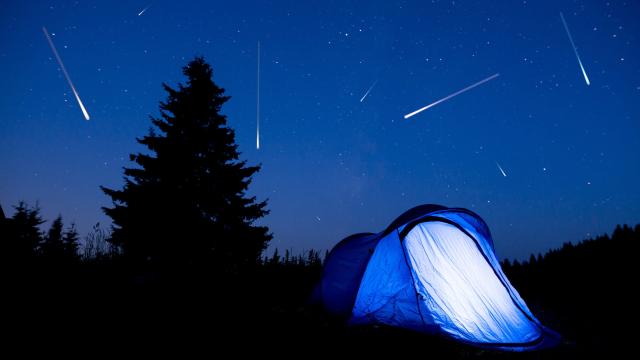This time of year, the sky provides welcome visual treats for mere mortals on the ground. You might already be thirsting for the next big thing in the cosmos, considering the Lyrids have already come and gone this month, and the pink Super Moon has already waned into a less stunning phase.
Don’t despair: Space is serving up more reasons to venture outside in the small hours via another show that’s actually been in full-swing since April 19: the Eta Aquarid Meteor Shower. This particular shower comes from the fabled Halley’s Comet, and sends burning fragments of rock and ice darting through the cosmos at 148,000 miles an hour.
Not to worry though, you’ll still be able to see these very fast space rocks if you follow the normal stargazing protocol — especially if you live in a more southern latitude.
What are the Eta Aquarids?
They come from the Halley’s comet, which itself is only visible from Earth every 76 years. Because of Halley’s icy, gassy, dusty composition, bits of the comet flake off every year around April and May when Earth crosses its orbital path, creating this particular shower. The shower has a rather breakneck pace, but luckily for stargazers below, the meteors leave “ionized gas trails that glow for a few seconds after the meteor has passed,” according to Earthsky.
Halley’s comet actually has another meteor shower that presents during October, the Orionids. The Eta Aquarids, however, occur this year from April 19 through May 28, with their peak occurring on Thursday, May 5
How to see the Eta Aquarids
The meteors originate from their radiant, the constellation Aquarius. More specifically, the meteor’s origin star is Eta Aquarii, which is found in the Y-shaped, “water jar” asterism, located in the northern portion of Aquarius, Earthsky points out.
It isn’t imperative that you locate any meteor shower’s radiant to see it, as rocks darting through sky typically cover a broad enough area to glimpse simply by gazing upward. But the radiant’s high-point is indicative of when a meteor shower peaks. Earthsky elaborates on how this works with respect to this particular shower:
For the Eta Aquariids, the radiant soars highest in the nighttime sky just before dawn. That’s why you can expect to see the most meteors in the wee morning hours.
Though the other meteor showers that have occurred this year have meant prime viewing for people in more northerly latitudes, the Eta Aquarids are most visible to folks in the Southern Hemisphere (though still visible to people in the Northern Hemisphere).
In other words, if you live in the American south or southwest, you’ll be treated to a prime view. But no matter where you live, the show will still be visible, albeit less radiant. NASA notes that the shower typically sends 10 meteors racing across the sky per hour in the Northern Hemisphere, but that could crest to upwards of 20 in more southerly locales.
The best way to see the show is to venture outside late at night. Earthsky notes that the shower technically peaks in the late evening, while the radiant is still relatively low, but wanes as the radiant moves higher in the sky:
Late evening is the best time to see earthgrazers, meteors that make exceptionally long streaks across your sky. As the radiant rises higher – that is, as the hours of the night tick away to dawn – you’ll see shorter meteors, but more meteors.
As usual, if you decide to trek outside the catch the visual feast, avoid light pollution and look up.

Leave a Reply
You must be logged in to post a comment.